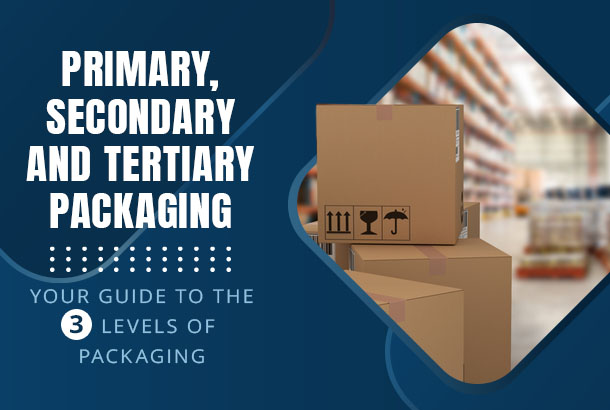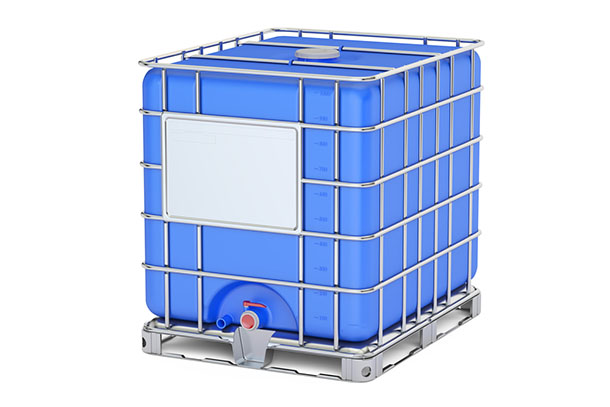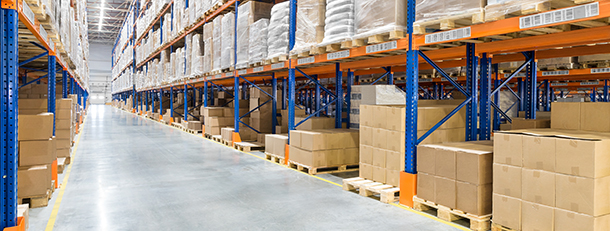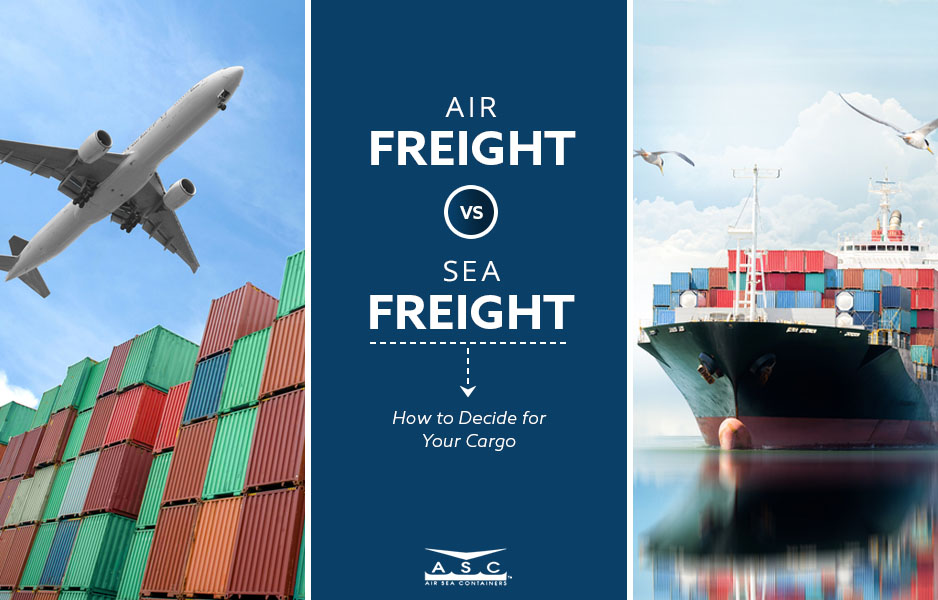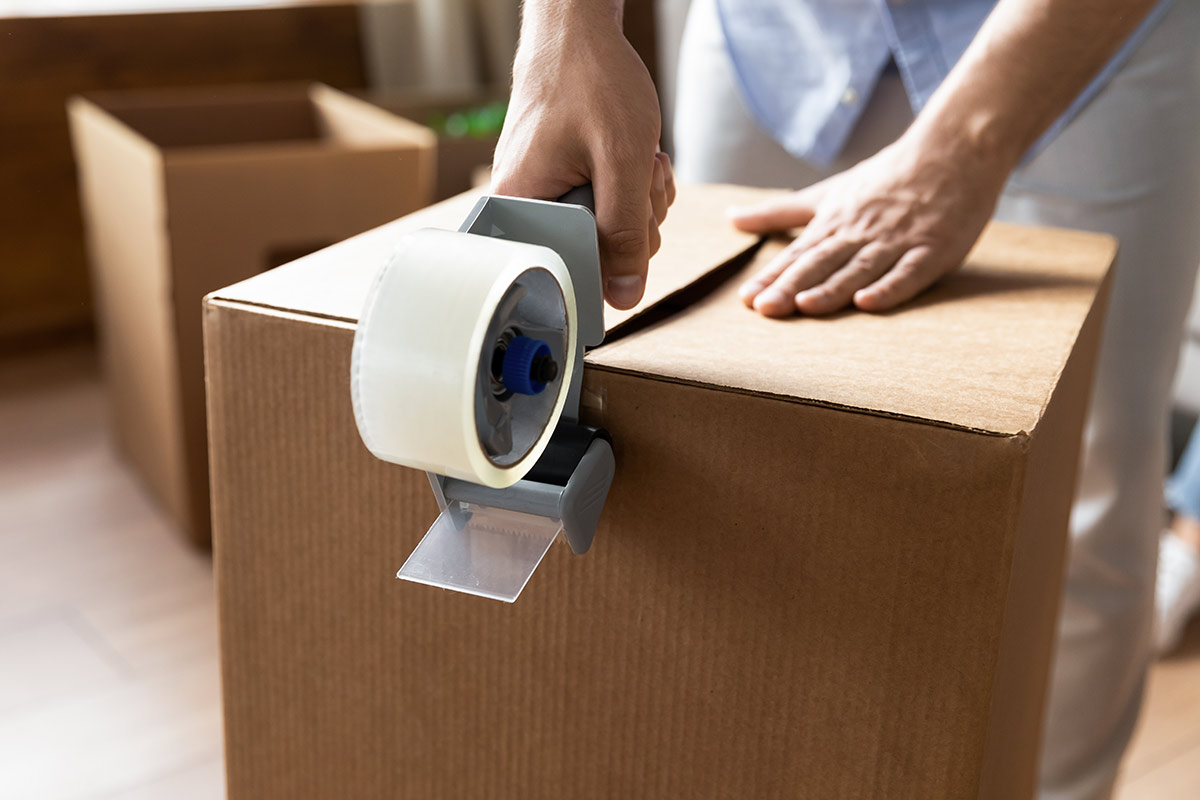- Primary packaging is the packaging that contains the product.
- Secondary packaging includes boxes or containers containing specific quantities of primary packages.
- Tertiary packaging includes pallets and large shipping containers for storing and warehousing.
- All three types are used to ship products from the production line to the consumer; each level represents a different scale.
If you travel down the aisles of your local grocery store, you may see all kinds of products in numerous types of packaging. Yet, despite the wide variety of shapes and designs, most of them would be classified as primary or secondary packaging. However, if you visited the same supermarket’s storage area, you would see tertiary packaging on the industrial shelving.
What exactly is the difference between primary, secondary and tertiary packaging? How important is this classification system? Understanding the answers to these questions is critical to strategizing your marketing and refining the processes behind packing and shipping different products.
What Constitutes Primary Packaging?
If you buy a single soda can from a vending machine, you can consume the soda without opening any additional packaging. In other words, the can in your hands is the primary packaging.
As a general rule, it is primary packaging if it is in direct contact with the product. The main purpose of primary packaging is to protect, preserve and, in most cases, make it easier to handle the product.
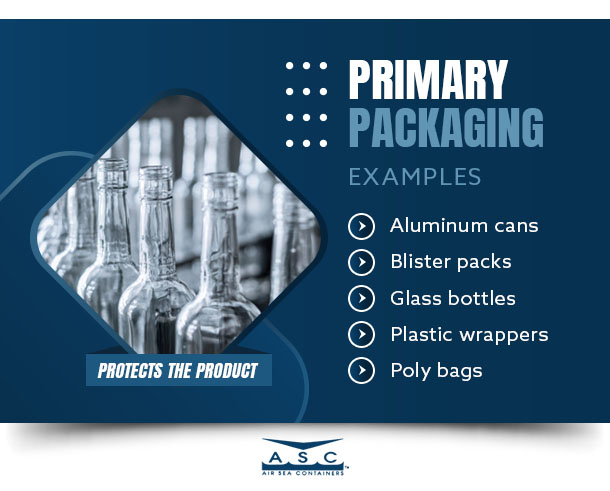
Examples of primary packaging include:
- Aluminum cans for soft drinks
- Blister packs for pills and pharmaceuticals
- Glass bottles for alcoholic drinks
- Plastic wrappers for chocolate or candy bars
- Tin cans for canned goods
- Tubes of toothpaste
- Poly bags
- PET bottles
- Vials
- Cardboard trays
Browse Our Selection of Poly Bags
What is the essential role of primary packaging?
From the consumer’s point of view, the primary packaging is the last element that separates them from the product.
However, from the manufacturer’s point of view, it is the first layer of defense to protect the product from damage. Although this is especially true for perishables and food products, primary packaging must also give an adequate layer of protection to non-perishable goods.
Primary packaging protects the product from damage like impacts, tearing and punctures; spilling, especially for liquid goods, or exposure to elements that would cause it to deteriorate, such as cereal exposed to sunlight. For these reasons, the sight of torn or damaged packaging can be enough to turn a consumer away from your products and have them select a competitor instead.
Seeing defective primary packaging often leads consumers to assume the product inside was compromised before it reached the shelves, sending the wrong message about your company’s quality control.
How does presentation affect primary packaging?
Branding and presentation are critical for attracting the consumer toward your items. If the primary packaging is relatively durable and used to present or display your product (e.g., bottles, cans), it must feature clear, unambiguous and recognizable branding.
A well-designed primary packaging must represent your item accurately and give a good impression of its quality from the first glance. For example, a soda can typically features bright colors and easily recognizable patterns, to the point that a consumer can recognize the brand or product type just from the color scheme (e.g., Coca-Cola red or Mountain Dew green).
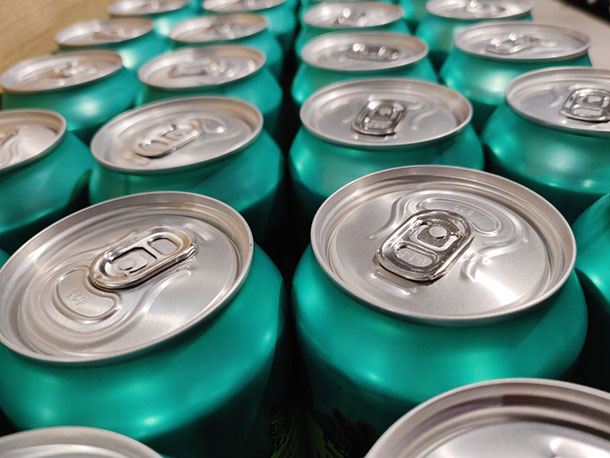
Many relatively fragile products employ two-layered primary packaging, consisting of an outer layer carrying the branding and an inner layer protecting the product from the elements. The most common example is the cereal box, consisting of a branded cardboard box and a poly bag.
In many non-food applications, especially products that do not use standardized packaging, such as cans, bottles, tubes or blister packs, the design and functionality of the primary packaging become an essential part of both form and function.
A typical example is toy packaging for dolls or plushies; it must present and showcase the product clearly, be sufficiently easy to open to avoid consumer frustration and yet be robust enough to protect the product during shipping and transport.
It is also common for the product manufacturers to give extra care and attention to the packaging design and make it stand out from the competition, even though it may not be part of the product itself.
What about sustainable packaging materials?
In recent years, consumers have been paying attention to packaging sustainability and eco-friendliness. Many consumers now make long-term purchasing decisions based on whether the materials employed to pack the product are respectful of the environment.
Using recycled or 100% recyclable materials can help project the image of an environmentally conscious company, caring for customers and the planet.
What Is Secondary Packaging?
Suppose that instead of buying a single soda can from the vending machine, you want to buy a 12-pack from the supermarket. The cardboard box containing those 12 cans is called a case, a secondary packaging type.
Secondary packaging refers to containers designed to carry and store designated quantities of primary containers. Although they may exist in various forms and contain varying numbers of products, a given secondary packaging always contains multiple items of a single Stock-Keeping Unit (SKU).
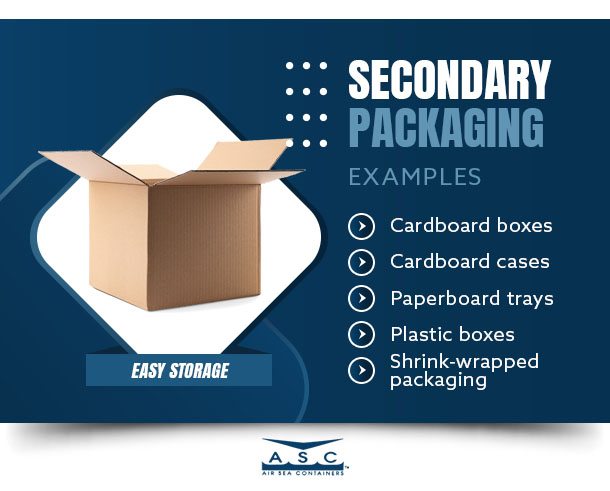
Common examples of secondary packaging include the following:
- Corrugated cardboard boxes
- Cardboard cases
- Paperboard trays
- Plastic boxes
- Shrink-wrapped bundles of primary packaging (cardboard or plastic base optional, may or may not possess handles)
Secondary packaging usually fulfills two purposes: providing additional protection to the products and ease of storage.
The protective nature of secondary packaging varies a lot, ranging from nonexistent to significant, depending on the nature of the primary packaging and the manufacturer’s priorities concerning presentation and branding.
Secondary packaging must also make it easy to store fixed quantities of a specific SKU, which means they should be easy to stack and store. The stackability of secondary packaging is critical to avoid wasting space during storage and transportation.
Depending on the product sold, end users and consumers may encounter secondary packaging instead of primary packaging, typically in the form of boxes or cases referred to as packs.
For these products, the box’s design, color scheme, branding and sustainability may be as critical in attracting the consumer as with primary packaging.
Secondary packaging may also be reused or repurposed by the end-users for storage (e.g., refilling a cardboard tray with cans), potentially inciting the manufacturer to pay attention to material durability.
Buy Eco-Friendly Packaging Materials
Is Retail Packaging One of the Three Levels of Packaging?
Retail packaging is what the customer sees on the store shelves. Although it is not part of the three levels of packaging, it is critical to understand this concept.
Retail packaging may include containers traditionally considered primary or secondary packaging, but they all have the following features in common:
- They are handled and received by the customer (in other words, they will take that packaging home).
- They feature recognizable branding and design to attract customers.
- They may feature non-standard or custom dimensions as part of the design.
In the specific case of secondary retail packaging, they should be distinguishable and avoid resembling plain corrugated boxes and other standardized containers, despite fulfilling many of the same practical purposes.
Surveys have shown that when considering buying a new product, 72% of American consumers view the packaging’s design as an essential element, 68% pay attention to the materials used in its construction and 63% say they prefer cardboard or paper because they can easily reuse it.
For these reasons, many small and online-only businesses frequently and heavily rely on elaborate, sustainable retail packaging designs to establish and maintain their customer base.

What Is Tertiary Packaging?
If you see 12-pack soda cases on supermarket shelves, they were likely not received in their secondary packaging from the factory. If you look in the supermarket’s storage room, you will find multiple layers of cases arranged on pallets, often encased in shrink wrap to keep the cases together. This type of packaging is called tertiary packaging, also referred to as bulk packaging or transit packaging.
The purpose of tertiary packaging is to group large quantities of secondary containers into a single unit known as a distribution unit, making them convenient to load and unload between warehouses and transport vehicles.
The pallet, also known in some countries as a skid, is the world standard for tertiary packaging. Pallets are designed to be easily moved by another staple of warehousing and storage facilities: the forklift.
Products loaded in secondary packaging are loaded together onto a pallet at the point of production, and then secured using shrink wrap before loading into a transport vessel, such as a semi-trailer or a shipping container.
Palletized goods are secured and protected from damage during transport, giving the product a minimum of three layers of protection and making it more resistant to rough handling and turbulent transport conditions.
Where does tertiary packaging go?
Tertiary packaging is destined mainly to warehouses, such as a wholesaler or a retailer’s storage room. Due to their size, form factor and high product quantity, they are generally not meant to be seen directly by consumers. So, they feature little to no distinctive branding, often featuring no more than information solely relevant to the storage facility, such as manufacturer, SKU, item quantity and gross weight.
To give a practical example of the quantities involved, a standard 12 fl. oz. soda can is 13.5 oz. filled (to account for the can’s weight). A 12-pack case of soda cans weighs 162 ounces or just over 10 lbs. A pallet of soda cans can fit at least 250 12-pack cases, representing a total of 3,000 cans and about 2,500 lbs, equivalent to the curb weight of a typical passenger car.
Like secondary packaging, a given pallet or equivalent tertiary container only contains a single SKU, allowing warehouses and storage facilities to distinguish the contents and organize their inventory accordingly.
Are there alternatives to pallets?
Depending on the product, the standard pallet and shrink wrap method may not be the most suitable tertiary container. Alternatives include the following:
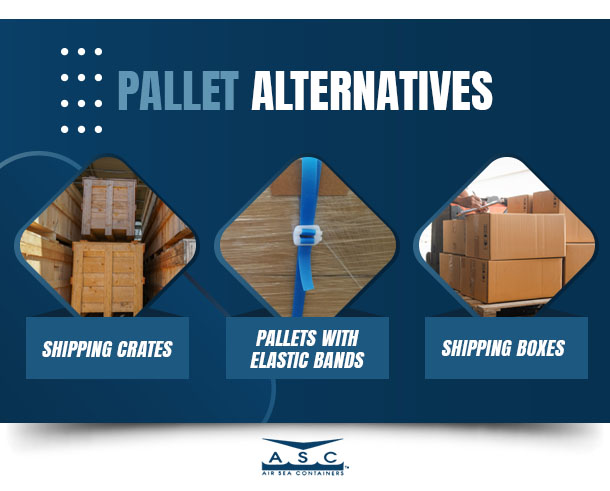
- Pallets with elastic bands: This container is suitable for shipping barrels and drums of all types onto a standard pallet, securing them using an array of adjustable elastic bands. A typical 48"x48" drum pallet fits up to four drums.
- Shipping crates: A shipping crate is essentially a huge wooden crate, typically equipped with palletized feet for easy forklift transportation. They are very durable and intended to be reused over several years. In addition, they are made from renewable and sustainable materials.
- Shipping boxes: A shipping box is a large cardboard box. Shipping boxes are a cost-effective alternative for transporting large quantities of relatively small products, such as medication or cosmetics. They typically employ heavy corrugated cardboard and may be compatible with pallet bases for forklift transportation. Although standardized dimensions exist, custom shipping boxes are also available for businesses with specific needs and requirements.
What Are the Requirements for Shipping Hazardous Materials?
If you need to package and ship hazardous materials and dangerous goods, you require packaging that meets various national and international safety requirements.
For example, a company shipping lithium batteries must use boxes compliant with UN regulations and the specifications outlined by the US-DOT, ICAO, IATA and 49 CFR. Look for the circular UN symbol to recognize UN-rated packaging.
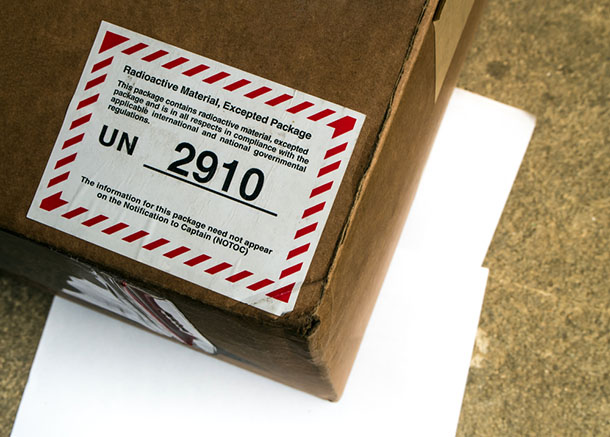
Typical lithium-ion battery packaging includes the 4G/Y box, a specific UNrated 4G box rated for Packing Group II products. Packing Group II is a legal definition for items and substances that present a medium level of danger. You can use a 4G/Y box to transport items classified into Packing Group II or Group III (low danger level), but not Group I (high danger level).
Don’t forget that all containers and packaging intended to transport hazardous materials must also feature appropriate hazmat placards, denoting the classes and types of dangerous goods inside.
Choose Air Sea Containers as Your Packaging Partner
Understanding the three levels of packaging can help you select the right container types for your business, ensuring the safety and efficiency of your logistics. Using the most efficient packaging will protect your products from damage and ensure safety at all levels, from the production line to the end user.
At Air Sea Containers, we understand the packaging needs of businesses and companies don’t always fit in standard-sized containers. We offer a wide selection of containers and packaging materials made from durable eco-friendly materials, hazmat-rated and compliant with relevant shipping and storage laws and regulations.
Image Credits
Applesixstudio/Shutterstock.com
Nordroden/Shutterstock.com
New Africa/Shutterstock.com
DSGNSR1/Shutterstock.com
mindroom14/Shutterstock.com
Siwakorn1933/Shutterstock.com
Bauwimauwi/Shutterstock.com
Satakorn/Shutterstock.com

